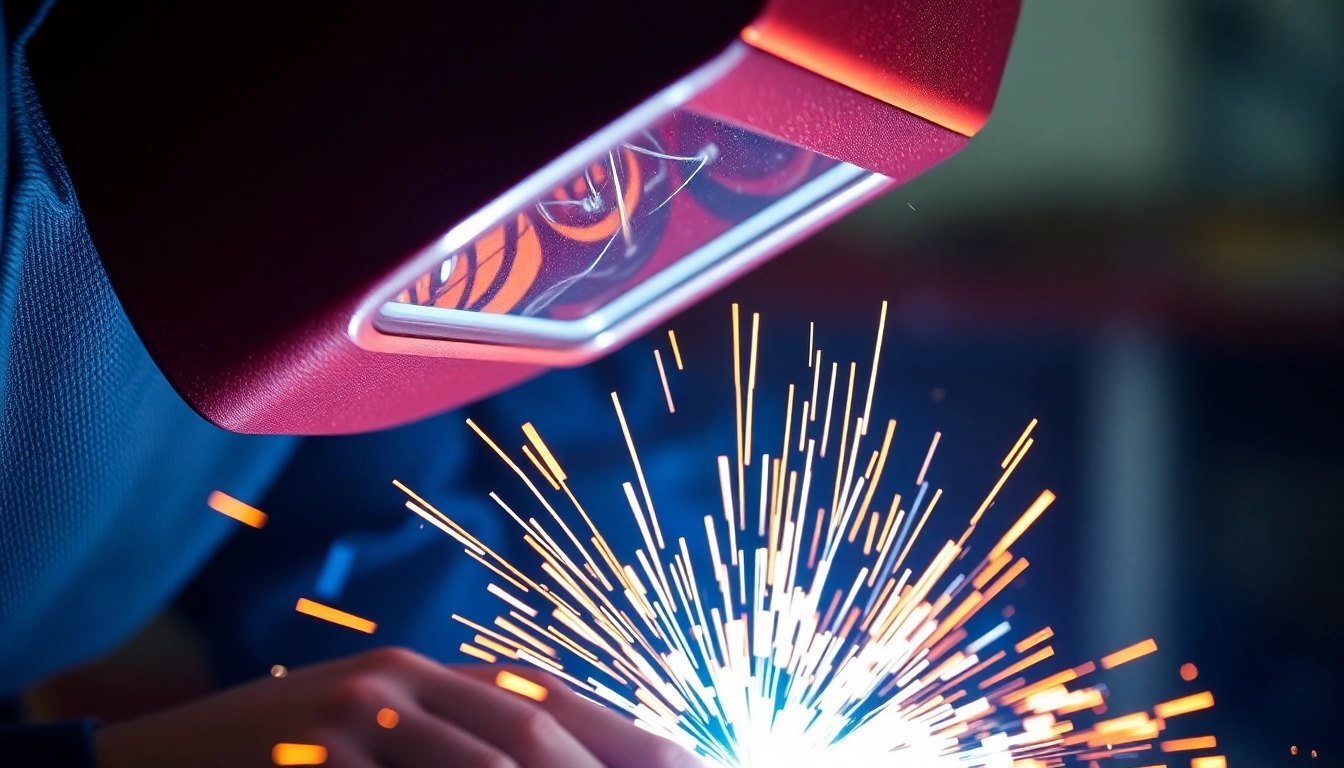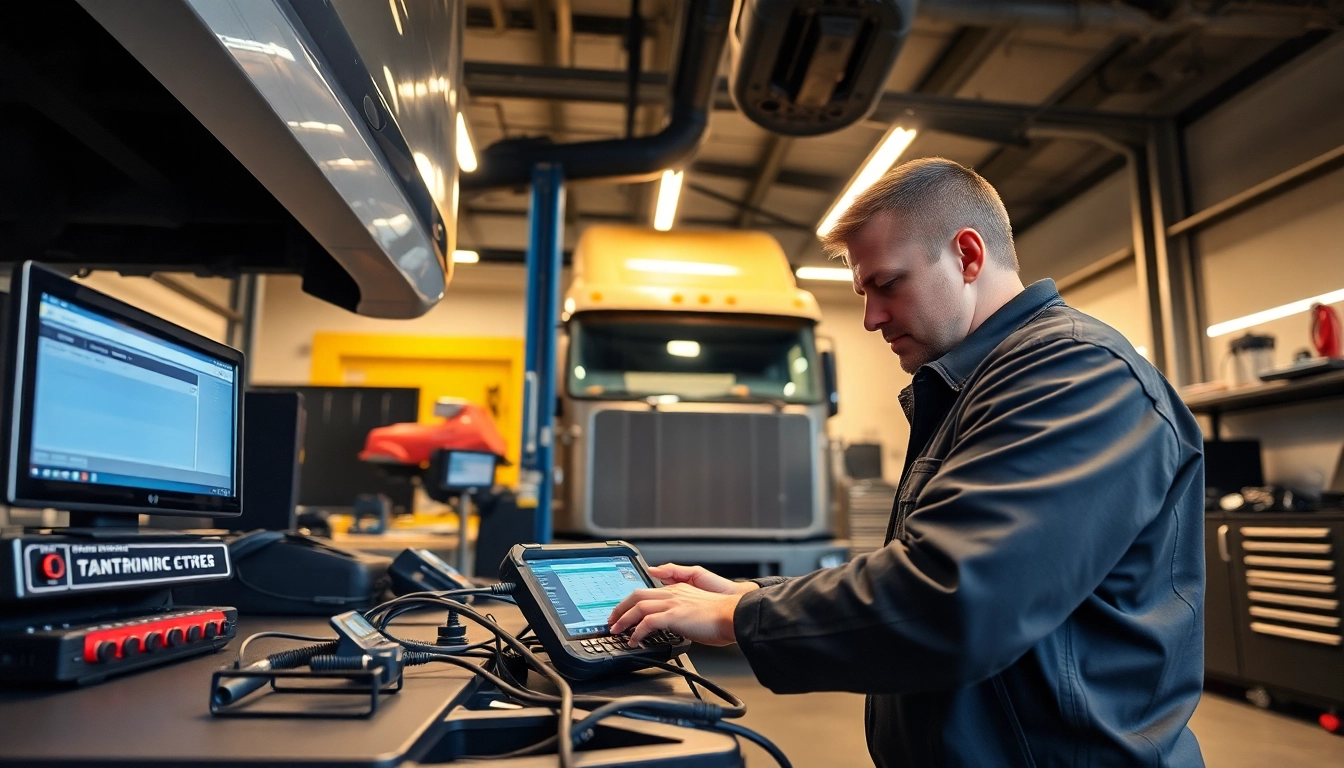Understanding AC DC TIG Welders
What is an AC DC TIG Welder?
An ac dc tig welder is a specialized welding machine designed to utilize both alternating current (AC) and direct current (DC) for tungsten inert gas (TIG) welding. This flexibility allows welders to work with various metals, including aluminum, stainless steel, and carbon steel, expanding the versatility of welding applications significantly.
The AC function is particularly beneficial for welding aluminum and magnesium, while the DC function enables users to weld tougher metals like steel and stainless steel with a stable arc and improved penetration. Modern AC DC TIG welders have evolved from basic machines into sophisticated inverter technology that provides enhanced performance, portability, and efficiency.
Benefits of Using AC DC TIG Welders
AC DC TIG welders present numerous advantages that enhance their usability and effectiveness in various welding projects.
- Versatility: The ability to switch between AC and DC means that welders can tackle a wider range of materials and thicknesses.
- Precision: TIG welding is known for providing a cleaner, more refined weld, making it ideal for intricate and high-quality projects.
- Control: The operator has enhanced control over heat and penetration, especially in thin materials, allowing for more finesse in the welding process.
- Less Cleanup: The clean burn characteristics result in fewer contaminants, reducing the need for post-weld cleanup.
Applications of AC DC TIG Welding
AC DC TIG welding is used across various industries due to its remarkable precision and adaptability. Common applications include:
- Aerospace: High-quality welds are critical in constructing aerospace components.
- Automotive: Commonly used for exhaust systems and frame welding due to its clean and strong weld seams.
- Art and Sculpture: Artists use TIG welding for intricate metalwork, showcasing the beauty of the material.
- Shipbuilding: Essential for building steel and aluminum vessels, requiring durable and precise welds.
Choosing the Right AC DC TIG Welder
Key Features to Consider
When shopping for an AC DC TIG welder, it’s vital to consider several key features that can influence performance and usability:
- Amperage Range: A welder should have a broad amperage range to handle thick and thin materials effectively. For most welding tasks, look for units that offer at least 5-250 amps.
- Frequency Control: Higher frequency settings can improve the stability and control of the arc, particularly when working with AC.
- Voltage Input: An inverter system with dual voltage options enhances portability and usability in various settings.
- Foot Pedal Control: This feature provides greater precision when it comes to controlling the heat delivered during the welding process.
Top Brands and Models
The market is filled with reputable brands producing top-of-the-line AC DC TIG welders. Some noteworthy models include:
- Everlast PowerTIG Series: Known for their performance and efficiency in both AC and DC modes.
- Lincoln Electric Aspect: Particularly renowned for quality and reliability, this model serves well in demanding applications.
- PrimeWeld TIG225X: A great entry-level option with robust features suitable for both novices and professionals.
Comparison: Analog vs. Digital TIG Welders
The two predominant types of TIG welders in the market are analog and digital. Each presents its advantages and drawbacks:
- Analog Welders: Typically more affordable and straightforward, they employ traditional dials for setting amperage and other settings. However, they lack the precision and programmability of their digital counterparts.
- Digital Welders: These models provide enhanced features such as digital displays, memory settings, and programmable features that allow for better control and consistency. While generally more expensive, they can greatly improve the quality of work.
AC DC TIG Welding Techniques
Setting Up Your Welder for Optimal Results
Proper setup is crucial to achieving optimal results with AC DC TIG welding. Here’s a series of steps to prepare your welder effectively:
- Select the Right Electrode: Choose the appropriate tungsten electrode for the material being welded. For aluminum, a pure tungsten or zirconiated electrode is typically used, while a thoriated type is ideal for steel.
- Set the Correct Amperage: Adjust the amperage based on material thickness and welding position. Thin materials may require lower settings, while thicker materials might need higher.
- Choose the Right Gas: Argon is the preferred shielding gas for TIG welding; however, a mix of argon and helium can be beneficial for aluminum welding.
- Test the Arc: Always perform a test weld on a scrap piece of material to ensure settings are correct before starting your main project.
Common Welding Techniques for Beginners
Beginners should familiarize themselves with the following welding techniques:
- Weaving: A side-to-side motion to create wider beads and better penetration when welding thicker materials.
- Pulsing: Alternate between high and low amperages to control heat input and prevent warping.
- Stacking Dimes: A visual guide for good fusion where the weld resembles stacked coins, indicating consistent travel speed and steady heat.
Advanced Techniques for Experienced Welders
As skills progress, welders can employ advanced techniques such as:
- TIG with Filler Material: Understanding when and how to introduce filler rod into the weld pool to help with joints and gaps.
- Pulse Welding: This advanced technique involves adjusting the welder’s settings to create a pulsing effect that produces high-quality welds on thin materials.
- Multi-process Welding: Mastering the switch between different welding processes (like MIG or Stick) can optimize results based on material types and welding conditions.
Maintenance and Troubleshooting
Essential Maintenance Tips for Longevity
Regular maintenance ensures that AC DC TIG welders perform optimally over time. Follow these essential maintenance tips:
- Regular Cleaning: Keep the welder free of dust and debris, particularly around vents and electrical components.
- Check Cables and Connections: Inspect for wear and tear on cables regularly, and replace or repair any damaged connections promptly.
- Replace Electrode Tips: Regularly check and replace tungsten electrode tips as they wear down to ensure consistent performance.
- Calibration Checks: Periodically calibrate the machine to ensure accuracy in readings for voltage and amperage settings.
Common Issues and Fixes
Even seasoned welders can encounter issues. Here are some common problems and their solutions:
- Inconsistent Arc Stability: Ensure proper gas flow and check the connections. A clogged gas lens might require cleaning or replacement.
- Poor Penetration: Adjust the amperage for proper settings or ensure that the electrode is correctly angled during the welding process.
- Excessive Spatter: This may indicate improper gas coverage or incorrect welding speed. Adjust settings accordingly.
When to Seek Professional Help
If you encounter persistent issues with your welder that are beyond basic troubleshooting, it may be time to consult a professional. Signs that professional help is needed include:
- Frequent Electrical Failures: If the machine continually blows fuses or trips circuit breakers, a possible internal failure might require professional evaluation.
- Overheating: If components regularly overheat despite proper maintenance, it can indicate deeper mechanical issues.
- Unusual Noises: Any strange sounds during operation can indicate loose parts or mechanical failure that requires professional inspection.
Future of AC DC TIG Welding
Emerging Trends in Welding Technology
The future of AC DC TIG welding is poised for change, with several emerging trends that promise to enhance welding technology:
- Automation: Increasingly automated welding processes, including robotic applications, will improve precision and efficiency.
- Smarter Welders: Advancements in AI and machine learning will lead to more sophisticated welders that can self-optimize settings based on material, thickness, and environmental conditions.
- Enhanced Portability: As battery technology improves, portable AC DC TIG welders will become more prevalent, making welding feasible in even the most remote locations.
Environmental Considerations in Welding
As industries become more focused on sustainability, the welding industry is no exception. Key environmental considerations include:
- Energy Efficiency: Newer models focus on reducing energy consumption while maintaining performance levels.
- Waste Reduction: Innovation in filler materials and processes aim to minimize waste in both material and excess heat.
- Recycling and Reusability: Advancements will increasingly focus on using recyclable materials and enhancing the longevity of welding components.
The Evolution of AC DC TIG Welders
The evolution of AC DC TIG welders has been significant, moving from the heavy and cumbersome machines of the past to today’s lightweight, portable, and intelligent systems. New technologies improve arc stability, minimize spatter, and enhance user interfaces, leading to a more streamlined welding experience. The future promises even greater advancements that cater to the evolving needs of the manufacturing and metalworking sectors.




